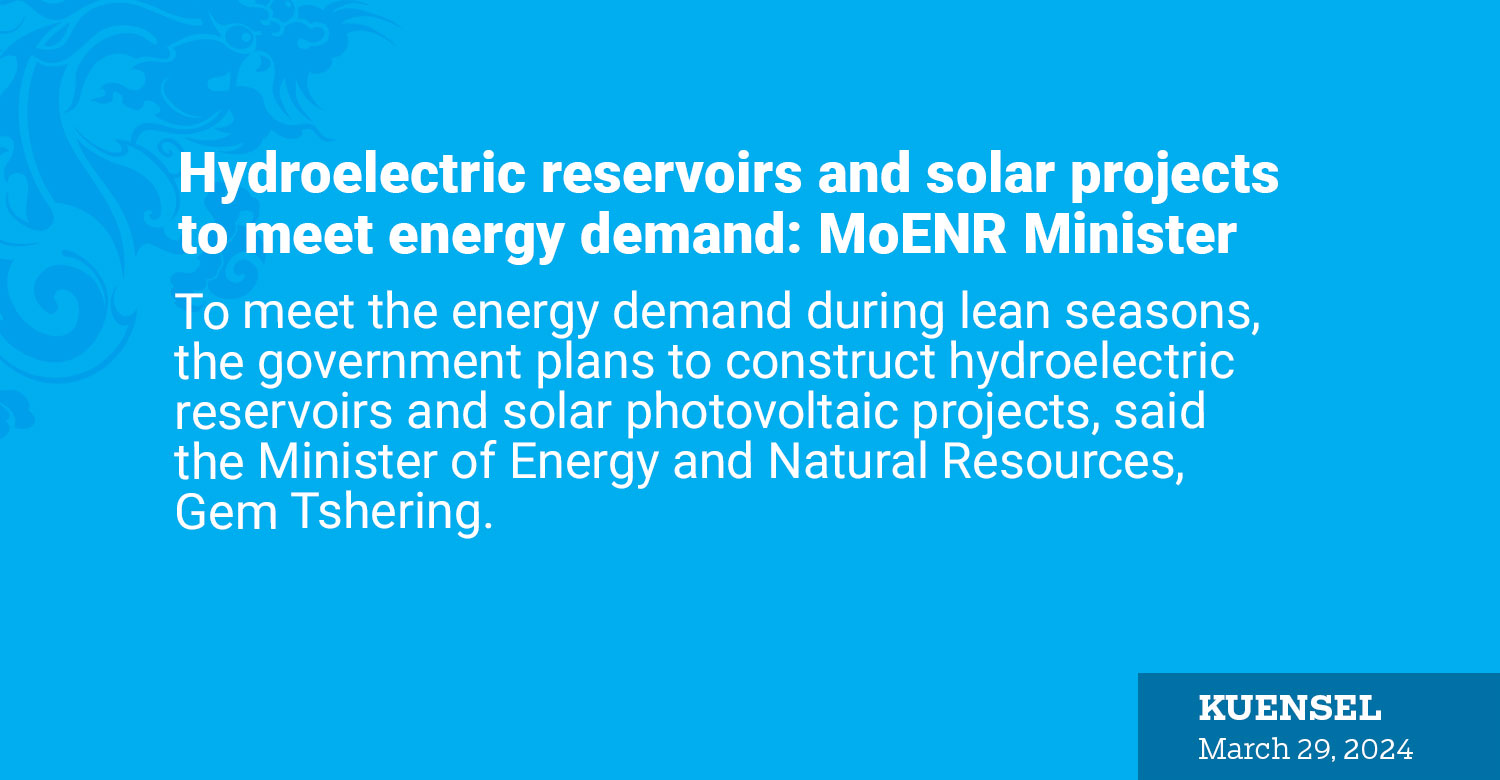Thukten Zangpo
To meet the energy demand during lean seasons, the government plans to construct hydroelectric reservoirs and solar photovoltaic projects, said the Minister of Energy and Natural Resources, Gem Tshering.
He said that Bhutan is impelled to import electricity for about six months because of poor hydrology.
The Chhukha hydro-project, with an installed capacity of 336 megawatts (MW), reportedly generates less than 84 MW, according to Lyonpo. Similarly, the Tala hydro-project, with an installed capacity of 1,020 MW, produces only around 100 MW during lean periods.
From January to April 2023, Bhutan imported 349 million units of electricity, valued at Nu 1.72 billion at an average rate of Nu 4.93 per unit.
A study shows that Bhutan will have to import 1, 500 million units of electricity from India for about five months during the lean season (December last year to April this year), worth INR 6 billion.
According to the Domestic Tariff Projection 2040 report, Bhutan’s energy demand, projected at 6, 407 GWh last year, could grow by over 100 percent to 13,044GWh by 2030 in a usual scenario, and by 160 percent after including upcoming industries.
The escalating energy demand in Bhutan poses a significant challenge, particularly due to its unpredictable nature. This unpredictability stems from the emergence of industries and factories in the country’s southern belt.
To meet the energy demand in the future, Lyonpo said that the government is planning to install solar photovoltaic projects and hydroelectric reservoirs, a move from the current run-of-rivers projects.
He added that there are also plans to build several hydroelectric reservoirs in Chukha and Tala hydro-projects which will help in additional generation during lean season.
Lyonpo also said that the government has initiated the construction of the 17MW Sephu solar plant, alongside plans for the construction of a 100MW solar plant at Jamjee near Chundzom, among other projects in the renewable energy sector.
As an alternative to hydropower, the Department of Energy (DoE) has already installed a 600 kilowatts wind energy plant at Rubesa, Wangdue.
The DoE aims to generate 500 megawatts of electricity from the share of renewable energy in the next five years.
The growing domestic demand for electricity has led to a decline in electricity exports. In 2022, export sales amounted to Nu 22.6 billion, which decreased to Nu 16.64 billion last year. Conversely, domestic sales surged to Nu 8.73 billion in 2023 from Nu 4.41 billion the previous year.
Bhutan exports surplus electricity after fulfilling its domestic needs. Lyonpo said that industries cannot afford to cease operations during the winter months, necessitating imports to meet the demand for electricity.
According to the Sustainable Hydropower Development Policy 2021, the electricity allocation prioritises essential public institutions and services as the first preference, followed by individual households, general commercial establishments (including other public institutions and services), construction power, and ultimately, industries.
Although industries are allocated power with the lowest priority, the shutdown of industries due to power supply shortages, except during emergencies, is not a viable option unless the cost of imported power exceeds the affordability of the industries.
Two ongoing hydropower projects, namely Puna-I and Puna-II, are anticipated to be commissioned by July 2028 and December 2024, respectively.
In addition to these, construction is underway for three mini hydropower projects: Burgangchhu (54MW), Yungichhu (32MW), and Suchhu (18MW).
Furthermore, there are plans to install other mini hydropower projects with a combined capacity of 261MW.
Kuri-1 and Nyera Amari projects, with capacities of 1,125MW and 442MW, respectively, are in the pipeline.


